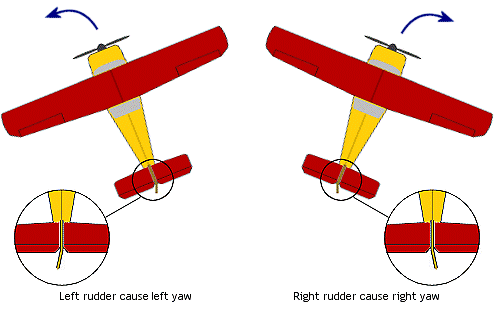Previously, we have talked about how to manipulate different control surfaces. But why would the deflection of control surfaces (e.g. aileron, elevator and rudder) lead to certain flight movements? Let's further explore it !
Rolling (By Aileron)
We can roll the aircraft by turning the yoke or joystick. Ailerons always move in pair and opposite i.e. one up and one down.
When we roll to right, we turn the yoke or joystick to the right. The right aileron will move up while the left aileron will move down.
Less lift is generated at the right wing as airflow on the upper wing surface is being disturbed. More lift is generated at the left wing as more air is deflected downwards. The aircraft will roll to the right along the center of gravity, and vice versa.
Pitching (By Elevator)
We can pitch the aircraft by pulling or pushing the yoke or joystick which controls the elevator.
When we pitch down, we push the yoke or joystick. The elevator will move down. More air is deflected downward that pushes the tail up. The aircraft will pitch along the center of gravity with the nose pointing down, and vice versa.

Yawing (By Rudder)
We can yaw the aircraft by stepping on the rudder pedal which controls the rudder.
When we yaw to the left, we step the left rudder pedal. The rudder will deflect to left. More air is deflected to the left that pushes the tail to the right. The aircraft will yaw along the center of gravity, and vice versa.

沒有留言:
張貼留言